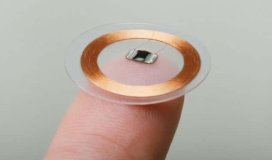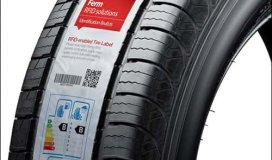The sons of radio frequency identification entrepreneur Touraj Ghaffari have released an open-source platform to make the results of their father's decades of work available to other RFID technology developers—at no cost. TigeRFID, available at the GitHub developers' service, includes an active RFID software application programming interface (API), as well as access to the necessary data to develop stations that program tags and ActiveWave standard fixed or mobile RFID readers.
Ghaffari founded ActiveWave in 2001 in Florida, to offer active RFID solutions using 433 MHz to transmit data to tags, while the tags transmit to readers via ultrahigh-frequency (UHF). The technology is currently being used to track vehicle fleets, as well as monitor inventory control, work-in-progress at factories and patient tracking in health care, among other applications. Companies in the U.S. Mideast, Brazil and other locations are employing the active RFID system in areas where passive RFID would not work as effectively. For instance, the tags are applied to cars at dealerships or storage lots, so that they can be interrogated at a distance, despite the presence of metal. They also operate well around metal racks and in large spaces such as warehouses, says Omid Ghaffari-Tabrizi, Ghaffari's son and TigeRFID's repository maintainer.
The ActiveWave technology offers a read range up to 30,000 square feet for a single reader, Ghaffari-Tabrizi says, using anti-collision logic to ensure that all tags are read in a crowded environment. The system is simple to install, he adds; the fixed readers are powered via AC/DC or Ethernet, while PC card-based readers can be attached to forklifts or trucks, and handheld readers offer Bluetooth and GPRS connection to a back-end server.
ActiveWave also sells a sealTag that allows for security features such as being tamper-evident, and a miniTag that can accommodate a temperature sensor. The tags can be configured to sleep in order to conserve battery life, and then to automatically awaken at predefined intervals, transmit information to the reader and go back to sleep. Conversely, they can be woken up intermittently by the reader's 433 MHz transmission.
Touraj Ghaffari died unexpectedly last year, and his sons had to decide what to do with his business. They felt that they lacked the technical background to run the business themselves, but that their father would have wanted the technology he developed to continue being used. Since their father's favorite animal was the rare Caspian tiger, Ghaffari-Tabrizi says, they named the open-source platform after the tiger in the hope that the technology would thrive—unlike the Caspian tiger, which went extinct near the end of the 20th century. "My brothers and I decided to open-source it with the main goal to enable the technology to keep going," he states.
To utilize the free platform, users can access the Bill of Material (BOM) files to determine which parts will be required in a particular system. They can then conduct programming with either C++ or C# and design the necessary PCBs. For hardware, users could design an antenna and develop the PCB schematics for the readers, programmers and tags, which could then be taken to a local manufacturer. The only expense, according to Ghaffari-Tabrizi, would be the cost of building the hardware.
More info visit rfidjournal.com



